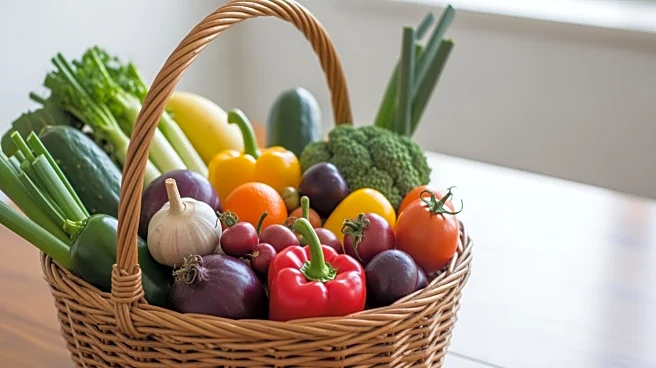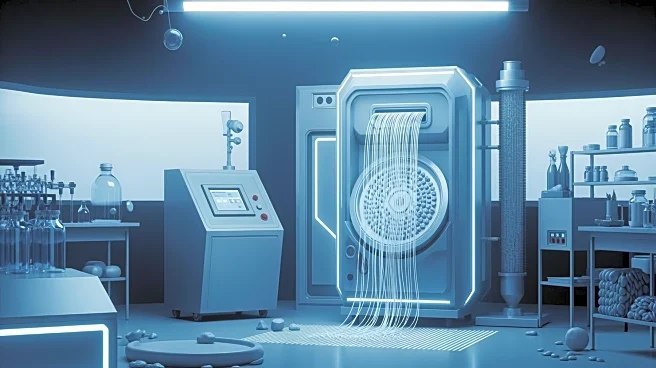What's Happening?
Recent studies have highlighted the presence of microplastics in various kitchen items, which may contribute to the ingestion of these particles by consumers. Items such as plastic food storage containers,
black plastic spatulas, non-stick air fryers, and tea bags have been identified as potential sources of microplastics. Research indicates that heating plastic containers in microwaves can lead to the highest release of microplastics and nanoplastics into food. Additionally, tea bags, especially those not labeled as compostable, can release significant amounts of microplastics when steeped in hot water. The article suggests replacing these items with alternatives made from glass, metal, or wood to reduce exposure to microplastics.
Why It's Important?
The presence of microplastics in food raises concerns about potential health impacts, including weakened immune systems and cell damage. As Americans are estimated to consume between 39,000 and 52,000 microplastic particles annually, understanding and mitigating sources of microplastics in everyday items is crucial. Transitioning to safer materials like glass and metal can help reduce the ingestion of microplastics, thereby potentially lowering health risks associated with these particles. This shift also aligns with broader environmental goals of reducing plastic usage and promoting sustainable practices.
What's Next?
Consumers are encouraged to gradually replace plastic kitchen items with safer alternatives. This includes opting for glass food storage containers, metal or wooden spatulas, and loose-leaf tea with stainless steel infusers. As awareness grows, manufacturers may face increased pressure to develop and market products that minimize microplastic release. Legal actions, such as the lawsuit against Rubbermaid for misleading claims about their plastic containers, may also drive industry changes.
Beyond the Headlines
The issue of microplastics extends beyond individual health concerns, touching on broader environmental and ethical dimensions. The production and disposal of plastic contribute to pollution and environmental degradation. By choosing sustainable alternatives, consumers can play a role in reducing plastic waste and its impact on ecosystems. This movement towards zero-waste practices reflects a growing global shift towards sustainability.











